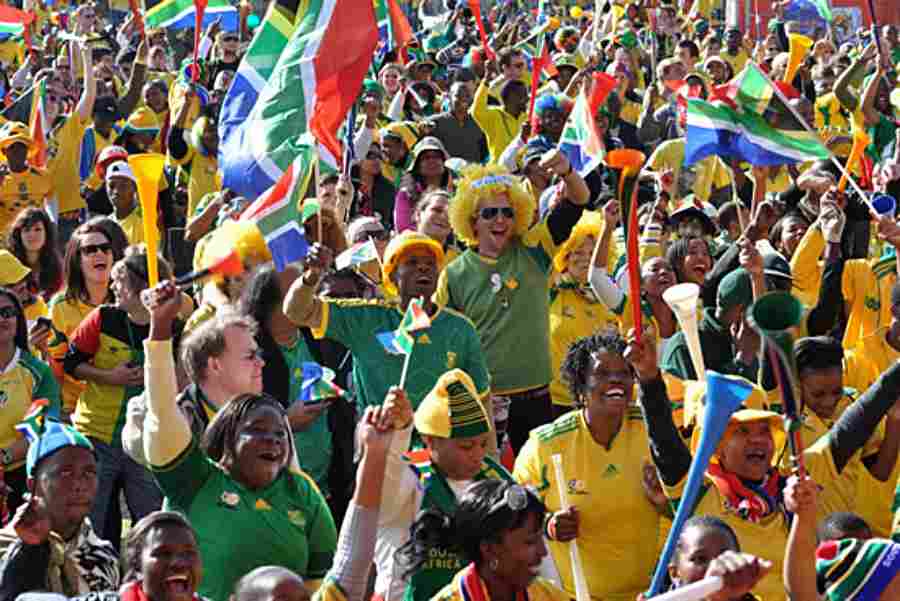South Africa’s population has increased from 51.7 million in 2011 to more than 62 million in 2022, which is a growth rate of 1.8% in the intercensal period.
This is according to Statistician-General Risenga Maluleke, who handed over South Africa’s Census 2022 national results to President Cyril Ramaphosa at the Union Buildings in Pretoria on Tuesday.
The population and housing census was conducted in February 2022 and provides comprehensive data on population size, demographic trends, and other service delivery related information.
“Females constituted 51.5% of the total population, while 48.5% were males. Gauteng and KwaZulu-Natal had the highest populations at 15 million and 12.4 million respectively, while the Northern Cape had the smallest (1.3 million).
“Black Africans remain the dominant population group at 81.4%, followed by the coloured population at 8.2%. The white population percentage declined to 7.3% in 2022 from 8.9% observed in 2011, while that for Indians/Asians increased slightly from 2.5% in 2011 to 2.7% in 2022,” Maluleke said.
The median age increased to 28 years from 25 years in 2011, suggesting a consistent increase over time and an overall increase of three years.
The population and housing census was conducted in February 2022 and provides comprehensive data on population size, demographic trends, and other service delivery related information.
The number of households increased from 14.4 million in 2011 to 17.8 million in 2022, an intercensal growth rate of 2%.
“The household size declined from 3.6 to 3.5 in 2022. KwaZulu-Natal consistently had the highest household size (4.4%), followed by Northern Cape (4.1%). The majority of households resided in formal dwellings (88.5%); Limpopo maintained the highest proportion of formal dwellings, as was observed in 2011, increasing from 90% in 2011 to 95% in 2022.
“The distribution of household headship between females and males is nearly equal, with approximately a 50-50 share for each. KwaZulu-Natal had the highest proportion of female-headed households,” Maluleke said.
More than 55 000 homeless individuals were recorded, with more males (70.1%) than females (29.9%), for both roofless and sheltered.
“Homelessness was more prevalent in metropolitan areas (74.1%) compared to non-metropolitan areas (25.9%). The City of Tshwane recorded the highest proportion of homeless persons (18.1%), followed by City of Johannesburg at 15.6%. Looking at the top five reasons for homelessness, job loss/no income was the most cited for both males and females (41.3%), followed by alcohol and drug abuse (25%),” the Statistician-General said.
Internal migration
Internal migration results showed that two provinces still dominate internal migration in South Africa.
Gauteng remained the dominant migration stream, receiving more than a third of all internal migrants, followed by Western Cape with 15%.
Over the intercensal period, four provinces experienced an outflow of people, namely Limpopo, Eastern Cape, KwaZulu-Natal and Free State.
“Census 2022 showed there were more than 2.4 million international migrants, which equates to just above 3% of the total population. Most of these came from the Southern African Development Community (SADC) region (86%) and of these, 45.5% came from Zimbabwe, followed by Mozambique with 18.7% and Lesotho with 10.2%.
“The top five sending countries to South Africa were Zimbabwe, Mozambique, Malawi, Lesotho and the United Kingdom; these five countries have also maintained their rank since 2011,” Maluleke said.
Water service
Although there was an increase in the proportion of households with piped water, the rate of increase slowed over time.
“Almost half of households (48.4%) reported experiencing water interruptions for two or more consecutive days; Northern Cape (65.8%) had the highest proportion reporting water interruptions, followed by North West (65.2%).
“The least occurrence in water interruptions was recorded in the Western Cape (28%). Households with access to the internet increased to 79% in 2022 from 35% in 2011. Internet access via cell phone was the most common source of internet for most households,” Maluleke said.
Education
More than three million children (0 – 4 years) participated in Early Childhood Development (ECD).
Provincially, children in Northern Cape (57%) and North West (52.4%) were more likely not to participate in ECD, compared to other provinces.
“Seven out of 10 black African children attended an ECD facility compared to eight out of 10 white children. Attendance at an educational institution increased to almost universal level between 1996 and 2022 for children aged five years and six years, while the attendance rate started to decline by age 15 – 24 over the period.
“Attendance increased for black Africans, coloureds and whites over the period while the Indian/Asian population showed little change,” Maluleke said.
For both 2011 and 2022, business, economics and management sciences and education were dominated by females, while males continued to dominate in engineering and electrical infrastructure studies.
Agriculture
There was a slight decline in the number of households participating in agriculture across six of the nine provinces from 2011 to 2022. The exception was for Limpopo, where the number of agricultural households increased by almost 5%.
“Slight increases were observed for Gauteng and Mpumalanga as well. In both censuses, KwaZulu-Natal, Limpopo and Eastern Cape had the highest number of households participating in agriculture.
“Almost two million households reported participating in agriculture for household consumption only; of these, and these varied by population group of the household head. Ninety three percent (93%) were black African-headed households, while only 3% were white-headed households.
“Of the 17.6 million sheep that were reported nationally as part of livestock ownership, 58% were reported in Eastern Cape and 13% in the Western Cape. Ownership of chickens was more predominant in KwaZulu-Natal (20.3%), followed by Eastern Cape with 16.7%,” Maluleke said.
Census 2022 was the fourth population and housing count in post-apartheid South Africa, with the first conducted in 1996, with subsequent censuses being conducted in 2001 and 2011.
– SAnews.gov.za
______________________________________________________________
FOLLOW INDEPENDENT PRESS:
TWITTER (CLICK HERE)
https://twitter.com/IpIndependent
FACEBOOK (CLICK HERE)
https://web.facebook.com/ipindependent
Think your friends would be interested? Share this story!





